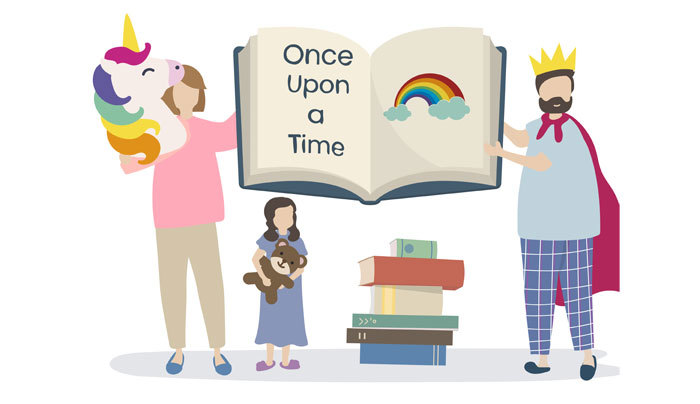13 Ways to Use Pathos in a Speech
Picture this. You look at your audience. They're all staring back, but their eyes are blank, obviously spaced out, and you're slowly starting to feel like you're talking to yourself. You've lost them.
If you've ever given a speech and received this reaction, your audience isn't connecting to your words. Why? Because you're missing the emotional aspect.
It's one thing to give a grammatically and factually correct speech. It's another to give a grammatically and factually correct speech that speaks to the audience's problems and tugs at their heartstrings.
That's why you need age-old elements like pathos to give your speeches that 'oomph' and make people go 'wow.' Here's how to use pathos in a speech to gain your audience's full attention.
Convincing the Audience Through Emotion: How to Add Pathos in Your Speech
Using pathos in a speech helps your audience feel like you're talking directly to them as individuals. It's not always efficient to appeal to people with reason. You need to draw on their emotions. Appeal to their pity, address their ambitions, and, perhaps, harness their anger.
But to do this, you need to know their wishes and desires. Only then can you use themes, words, and stories that resonate with them. This leads us to our first point.
1. Get to Know Your Audience
When choosing a topic, you need to research the audience first. See what type of topics they're interested in and their pain points. You'll also need to look into cultural and ethnic differences.
Pay special attention to the culture and avoid doing things that can be considered disrespectful. Also, avoid making insensitive jokes about serious issues. Some audience members could have certain triggers, so keep it as clean as possible.
2. Choosing the Right Topic
To elicit an emotional reaction, you need a topic with emotional undertones. You can also approach a topic from an uncommon, more emotional angle.
Aim to inspire people. Make things more personal. Randy Pausch's "Achieving Your Childhood Dreams" lecture is a great example. He talks about never giving up and achieving your goals. However, he makes this slightly overused topic so personal that it continues to touch people today.
3. Bring Out the Right Emotions
An exceptional speaker can make any topic sound amazing. However, you must consider your audience's ages and general life views.
For example, imagine giving a speech at a college graduation as an alumnus and talking about how this generation wastes time whining about mental health. You'll probably be booed or politely escorted out.
You need a topic that resonates with your listeners. For example, if you're talking to parents about gun violence, you can bet they'll listen. That's because it's a problem affecting them and their loved ones.
4. Incorporate Metaphors
Speeches can get pretty dull. Add some color to ensure your audience doesn't zone out. You can do this through metaphors and analogies.
For example, if you're going to talk about racism, try to compare the event to previous historical examples. Comparing white supremacists with Nazis can emphasize the severity of the problem. However, you need to be careful. The last thing you want to do is incite people.
Try to find metaphors your audience can relate to. However, take care that your metaphors embody the right emotions.
Click here for more examples of rhetorical devices to add oomph to your speeches.
5. Match Your Tone to the Situation
Match your tone to the context of your speech. Otherwise, the effect will be pretty jarring, and the audience will have difficulty connecting with you. Of course, it's different if you're using satire or humor.
If your topic is sad, maintain a somber tone. Alternatively, put on your happy voice if you are talking about something cheerful. The same goes for provocative topics. If you want people to feel something, you start by feeling it yourself.
6. Use Words With the Right Connotations
Choose your words wisely. Some words come with massive connotations apart from their everyday usage, and you can use these to drive your words home.
For example, saying someone is obsessed denotes something negative. On the other hand, passionate has a similar meaning but will be seen as a compliment.
The same goes for words like 'freedom fighters' and 'terrorists.' See which side of the line you're on and use the word representing that side.
Saying the right words at the right places will prevent people from turning away from you. For example, imagine you're talking to young adults. If you call them 'naive,' their reaction will be negative.
Swap 'naive' with 'inexperienced,' and you're unlikely to get any reaction. That's because 'inexperienced' is neutral.
7. Watch Your Body Language
Your body language plays a massive role in nonverbal communication. You need to coordinate both the message and movement to deliver the most impact.
You may be talking about the most exciting thing in the world. However, if you don't move your body in accordance with your tone, your audience won't feel your enthusiasm.
Similarly, it immediately kills the vibe if you're talking about a sad topic while moving excitedly. You must consider your posture and gestures when minding your overall body language.
Most audience members will notice your body language on a more subconscious level. However, your facial expressions are a different story; everyone will notice them. If they're not in sync with your message, you'll probably look like a psychopath.

For example, you shouldn't pace or smile when discussing genocide or murder. Longer pauses in your speech and slower movements are also expected.
However, if you're talking about your favorite book, you should convey your excitement with gestures and more vivid expressions.
8. Maintain Eye Contact
Eye contact is essential to establish a connection with audience members. Of course, you can't look at everyone, especially if you're addressing a large crowd.
The trick is to section the audience and make eye contact with a few members in each section. You can switch between sections as time passes.
Maintaining eye contact helps you interact with the audience because they tend to react more when you look at them. However, don't look at one person for five seconds. They may start to feel uncomfortable.
To make proper eye contact, you need to be thoroughly prepared. Make sure you remember everything you want to say and that you have a great understanding of each point in your speech.
That's because if you forget your points, you're more likely to look at the ceiling, which can disrupt your rhythm.
9. Tell Them a Story
Stories help people make connections. Through a story, you can help your audience empathize with your experiences.
However, you have to choose the right story. Marc Mero's speech about Mother's Day is an excellent example of using stories to get the audience to empathize with you.
If you don't have a story, take inspiration from your surroundings. However, you should only retell a story while giving proper credit. Nothing's more embarrassing than telling a great story and having people later find out it's not yours.

The usual stories include anecdotes about pets, family, or funny situations. Alternatively, you can talk about personal struggles, love, and success. However, if you're making something up, give the audience hints that it's not real.
Don't worry about exaggerations. No one minds a little exaggeration as long as it's believable.
Related: How to Tell a Tall Tale
10. Don't Be Afraid to Use Sensory Stimulators
People are more likely to remember information if they receive it through multiple senses. That's why many presenters use pictures.
However, you need to maintain a balance. If you try to use slides with pictures and text, the audience may become overly focused on them, not you.

If you want to use text with your images, focus on a few keywords. These keywords will drive the message home rather than take the audience's attention away. Alternatively, you can play with font and color to emphasize key points.
The next thing is the type of visual you use. For example, you use pictures of malnourished children when discussing world hunger. That's because children tend to draw the most sympathy.
In the same vein, select your visuals carefully. Choose images that demonstrate your topic and draw emotion from the audience.
11. Flaunt Your Sense of Humor Where Appropriate
Laughter is powerful and makes events much more memorable. People are more likely to remember your speech if you utilize humor.
After a good laugh with your audience, you'll seem more real and relatable and establish a camaraderie that makes them more likely to listen to you.
In addition, a few well-placed jokes can help lighten the mood if you speak on a heavier topic and keep your audience from zoning out.

You have to be careful, though. Humor is very subjective. Go for light humor unless you're absolutely sure your audience doesn't mind harsher jokes.
A little self-deprecation never hurts anyone, and you're less likely to offend people.
12. Read the Room
No one's perfect. If you don't know your audience well, you can offend them. However, it's vital to identify when that has happened and rectify things. Look for signs that your audience is getting annoyed or tired of you.
Once you've identified the problem, you can apologize. It is also an excellent point for a light joke. On the other hand, if you see your audience getting bored or distracted, get them back on track with a relatable anecdote or interactive question.
Other suggestions include making them do a little activity to snap them out of their daydreams or using sound to your advantage. Either stop talking or make a loud noise. It'll startle them but add drama to your speech and draw their attention back.
Pay as much attention to the listeners’ body language as they do to yours. If many people are slouching in their seats or frowning, it might be a sign that you're losing them. If you feel sudden tension in the air, identify the problem and diffuse it as quickly as possible.
13. Be Yourself
The audience wants to see you, and the people want to empathize with you. Nobody's asking you to be completely vulnerable before the audience.
However, letting a bit of your personality peek through in your speech and jokes will make you more relatable.
People are generally attracted to people who let their imperfections show. As such, you'll need to be humble and approachable. Your audience is unlikely to listen to someone who's too aloof or full of themselves.
Conclusion: Using Pathos for Speech
Learning how to use pathos in your speech isn't necessary to get an audience's attention. But it is essential to keep your audience interested all the way to the end.
Adding pathos to your speeches comes down to studying your audience. Learn what they want to hear and use that to get your point. Don't be afraid to use their pain points, but make sure you don't go overboard.
Once you learn how to harness your audience's emotions, you'll be able to get them to participate more in your speeches. Greater participation means greater attention. This is a sure way to assure the success of your speech.
You might also like: How to Establish Ethos in a Speech
